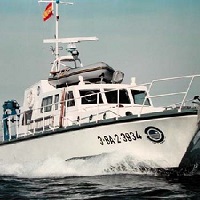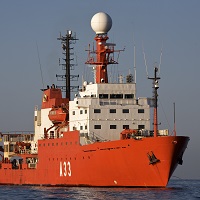Creation year
2004
76 record(s)
Type of resources
Categories
Topics
INSPIRE themes
Keywords
Contact for the resource
Provided by
Years
Formats
Status
-

Monthly survey to study thermohaline and biological characterization of water masses in the East-North Atlantic.
-

Multichannel seismic, collecting rocks by dredging, sediment collected by gravity corer, in addition to bathymetry and sounds in the Weddell Sea and the Sea of Scocia.
-

Monthly survey to study thermohaline and biological characterization of water masses in the East-North Atlantic.
-

Monthly survey to study thermohaline and biological characterization of water masses in the East-North Atlantic.
-

Monthly survey to study thermohaline and biological characterization of water masses in the East-North Atlantic.
-

Monthly survey to study thermohaline and biological characterization of water masses in the East-North Atlantic.
-

The surveys on NAFO Regulatory Area of Div. 3L (Flemish Pass) were initiated by Spain in 2003. The surveys were carried out by the R/V 'Vizconde de Eza' following the same procedures and using the same bottom trawl net type Campelen.The main objectives of this survey time series are: a) to obtain abundance indices of the main exploited species, b) to study the structure and distribution of these demersal species in the area.
-

Study and evaluation of the biomass of the anchovy in the Bay of Biscay within the National Sampling Plan.
-

Annually, the European Union develops two research campaigns in the area of NAFO (North Atlantic Fisheries Organization), one in the 3NO division and another in the 3M and 3L (Flemish Cap Series). This campaign is part of a historical series in order to provide indices for the evaluation of the stock of halibut and other groundfish species in the area such as flounder, redfish, grenadier, cod or shrimp. The Flemish Cap bank is an isolated bank of the American coastal platform with an area greater than 10,000 square miles and is located outside of the Exclusive Economic Zone of Canada. The exploitation of the resources of this area is regulated by the international agreements of NAFO. GOALS Estimation of abundance and biomass indices of the target species, as well as the study and analysis of the demographic structure of their populations and the oceanographic conditions in the Bank.
-

From day 12 to day 31 of the month of April the B / O Vizconde de Eza made the first of a series of multidisciplinary campaigns aimed at improving knowledge of El Cachucho fishing ground, located on the Asturian marginal shelf within the Spanish EEZ. Morpho-sedimentary study of the "El Cachucho" fishing ground and adjacent area. Dynamics and characteristics of water bodies. Characterization of benthic and demersal communities.
 Catálogo de datos del IEO
Catálogo de datos del IEO